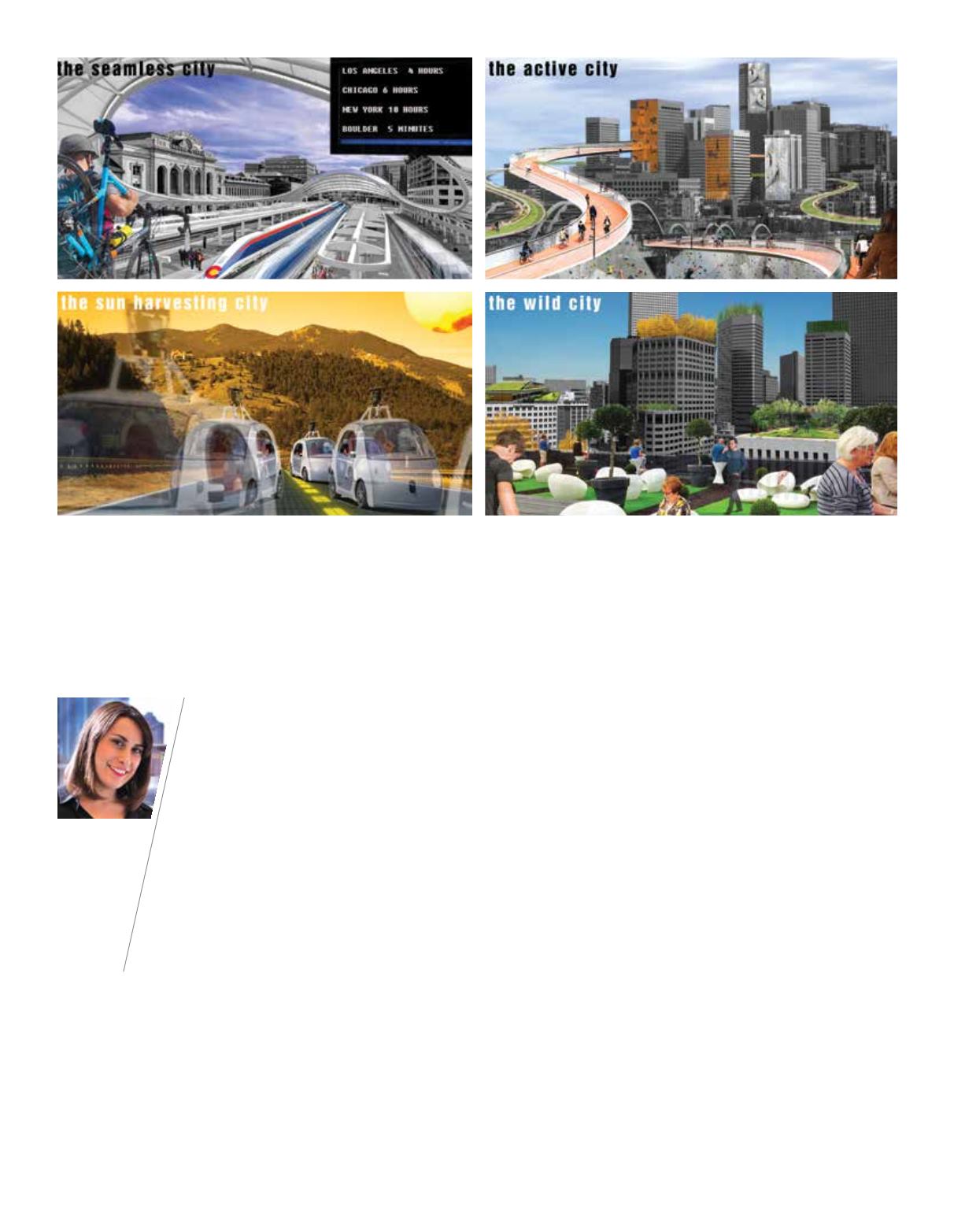

66
/ BUILDING DIALOGUE / JUNE 2017
‘What If?’ Exploring Denver’s Future through CollageO
ne of my favorite aspects of being an ar-
chitect is being asked to generate solu-
tions of what could be rather than what
is. There is a long history of architects
utilizing drawing and collage to project what the
future might look like. In 1923, the architect LeCor-
busier was spot on in his sketches of “a city of tow-
ers,” comprised of tall buildings and superhighways.
Design collectives in the 1960s and ‘70s such as
Peter Cook and Ron Herron of Archigram imagined
more radical future scenarios. In Cook’s “Plug-In City,”
he created drawings representing modular residen-
tial units that “plug in” to a central infrastructural me-
gamachine. Superstudio, an Italian architecture firm
founded in 1966, proposed a “Continuous Monument,”
a prophetic vision of grid systems that served as a way
to mediate space.
Fast-forward to modern day. Many aspects of these
early architectural provocations have been realized.
Through evolving, sophisticated technology, software
and construction methods, architects continue to move
the needle with solutions both imagined and built that
demonstrate forward-thinking infrastructure, transpor-
tation and building solutions.
But where does Denver fall in the spectrum of past,
present and future? Recently voted No. 1 city on the U.S.
News “Best Places to Live” list and experiencing a five-
year building boom with $2.5 billion in development,
Denver continues to develop at breakneck pace. Amidst
rapid development, it has arguably become difficult to
take a step back and to generate long-term solutions
that might let the city live up to its full potential.
In the spirit of Archigram and Superstudio, here are
a few collage thought-starters that incorporate various
exemplary models of infrastructure, building and the
public realm that might help us reimagine Denver’s
fast-approaching city of the future.
Image 1:
Denver’s Central, Western location has helped
the city be the staple trading post of the West. While
the city is developing an ambitious airport city meant
to drive economic growth and become a strengthened
link in a global network, we are still left with untapped
potential in regards to high-speed rail. A tested technol-
ogy that is prolific in Japan and China, not capitalizing
on high-speed rail seems a continued missed opportu-
nity that would position Denver as a critical link in a
national network that might move people, goods, and
ideas.
Image 2:
On the urban scale, traffic continues to be-
come a byproduct of growth and a continued reliance
on the personal vehicle as a means of primary trans-
port. With an active population and an existing bike
share program, looking at cities such as Copenhagen
and Beijing as precedents, could the city not consider
elevated, all-season bike paths that might seamlessly
connect major residential areas with our downtown
Beth R.
Mosenthal,
AIA, LEED AP
BD+C
Architect,
Anderson
Mason
Dale Ar-
chitects
1
2
3
4
















